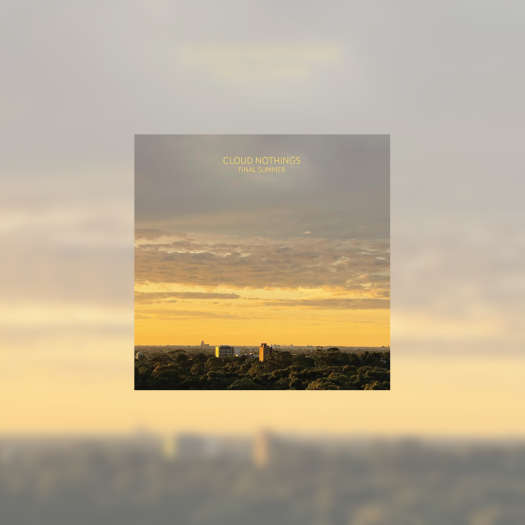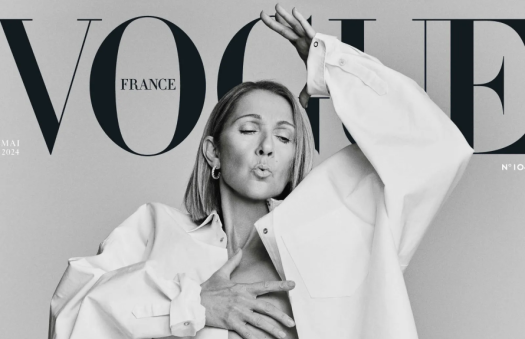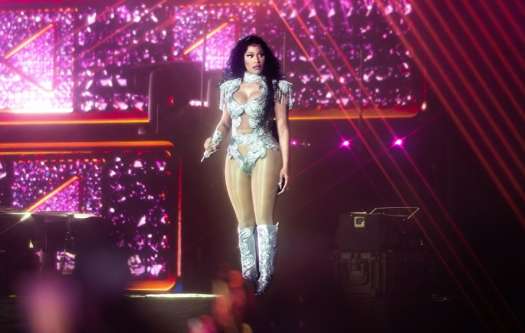While Cleveland-based electronic music trio Emeralds had been generating considerable buzz within noise circles for several years, 2010's Does It Look Like I'm Here revealed a latent pop sensibility and promptly thrust into the critical spotlight. Wire, Pitchfork and other publications generously applauded the album, charting it on their year-end lists, while musicians as diverse as Godspeed You! Black Emperor, Caribou and the Afghan Whigs enthusiastically booked them as tour support, and at festivals like All Tomorrow's Parties. They had earned it too. Released on Editions Mego, the Viennese label responsible for Fennesz's Endless Summer and Oneohtrix Point Never's Returnal, the album distilled their epic synth jams into lush, evocative brightly-hued instrumental vignettes which were both textured and melodic.
Though it took a while for them to gain traction among a larger audience, the band's arrival back in 2006 was just as timely. Their meandering kaleidoscopic synthscapes provided a deliciously pretty antidote to both the brutalism of noise and the rustic-neo-hippy clatter of so-called "New Weird America." Though bordering on new-age-y, evoking '70s forebears like Tangerine Dream and Ash Ra, their unique sound seduced the ears of numerous experimentalists notably pioneers Throbbing Gristle (who had them open in 2009), and members of Wolf Eyes who released their work under their imprints Hanson and American Tapes. The recently-released follow-up to Does It Look Like I'm Here, Just To Feel Anything, holds even more stylistic surprises than its predecessor. We spoke to member Steve Hauschildt about the band's unique sound and evolution.
What led to the formation of the band? What are your own individual musical trainings/ experiences like? How did you all arrive at this fascination with this particular set of instruments?
Emeralds formed out of a group called Fancelions, which were a four-piece. We were really into avant-garde and experimental music at the time and we wanted focus on a new project. Really, the band formed out of friendship and a collective desire to push the boundaries of music itself. I sang in a children's choir when I was younger, and studied percussion for a bit in school. But when I went to college I focused on and received a degree in art history. Music has always been the focal point of my life, though. I've always understood the interface of a piano or keyboard better than any other instrument, so moving towards synthesizers was a very natural thing for me. Me and John saw the potential that was there, not just in a traditionally musical way but in the textural possibilities. It was the fascination with new sounds that gravitated us towards analog synths and it has taken off from there.
You could perhaps describe your work as becoming less and less abstract over the span of your discography. What prompted these stylistic shifts, notably the introduction of capital-B beats and the foregrounding of guitars on the latest disc?
Abstraction itself is a vague term, especially in terms of music but I think it seeps out in our music across our entire discography. Stylistic shifts occur because we happen to listen to a lot of music and we take influences from many sources, many of which are non-musical. It was a matter of the time being right to employ drum machines in a way that made sense with the music we had made up to that point. The foregrounding of guitars has more to do with the recording situation, and having nice amplifiers, mics and other guitars for Mark to use instead of running completely direct as he had been doing for a while.
I'd imagine your gear to be pretty unique. For the geeks out there tell us a bit about your setup. What are some favourite pieces/ secret weapons?
Well, we have to keep some techniques secret but I can tell you about some of my favourite instruments that make an appearance on Just to Feel Anything. For a lot of the pads and sequences I would use the Rhodes Chroma, Prophet '08, Roland JD-990 and an Oberheim OB-X. Some of the string sounds would come from a Korg Polyphonic Ensemble, M-Tron soft-synth, which is a virtual mellotron and another string synthesizer that's similar to a Solina. And finally, I used the E-mu Emulator II+ for some of the textural parts and even faux string sounds as well.
It's tempting to read Emeralds' sound as a bit nostalgic in terms of its relationship to older synth-driven music. What is your feeling about this statement? Is this "nostalgia" intentional to an extent, or do you feel it's more more a by-product of your choice of musical equipment?
I guess the association to nostalgia makes sense in that context, but I think it is most definitely a by-product of the gear we use and how others have used it in the past. We definitely use a lot of techniques that are modern. I use the computer for sequencing and with our engineer also used a lot of features in the actual recording software to open up new possibilities for both control and processing. Our music is an amalgamation of a lot of equipment and techniques that span a wide range of time up to the very present.
To what extent are you purists about analog equipment? What is your take on the whole analog vs. digital argument?
I have an open mind when it comes to anything like that, it's more of a matter of taste when it comes to this dilemma. As in, if it sounds good does it actually matter?
Your initial work was largely improvised. To what extent is this still the case on this record? What is your creative process like when making an album?
The new record contains very little improvisation compared with every other release up to this point. There are still magical parts in the music, but it's a different and more involved process now. The creative process is definitely a strange thing to think about it, because for me I live in both worlds of the highly calculated and the spur-of-the-moment. Both approaches can yield results that enhance creativity; inspiration itself is something that flows through me always and compels to do things differently.
What differs about the live Emeralds experience? Do you cart all of this gear along with you? Do you perform the material from the album directly?
No it's totally impossible to take all of the gear with us on the road, it would be a disaster. Sometimes we have played songs live from the albums and other times we have written new and extended songs that are specifically intended for live performance.
What are some things, musical or otherwise, that inspire your output?
This is a difficult question because I'm inspired by so many philosophers, poets and artists that to mention a few would not only confine what I like, but also exclude so many other brilliant minds. If I must answer this I guess I'll just say that more recently I've felt a real kinship in thought with J.G. Ballard, John Donne, Umberto Eco, Marvin Gaye, Arthur Koestler, Susanne Langer, Philip Taaffe & Charlie White.
Though it took a while for them to gain traction among a larger audience, the band's arrival back in 2006 was just as timely. Their meandering kaleidoscopic synthscapes provided a deliciously pretty antidote to both the brutalism of noise and the rustic-neo-hippy clatter of so-called "New Weird America." Though bordering on new-age-y, evoking '70s forebears like Tangerine Dream and Ash Ra, their unique sound seduced the ears of numerous experimentalists notably pioneers Throbbing Gristle (who had them open in 2009), and members of Wolf Eyes who released their work under their imprints Hanson and American Tapes. The recently-released follow-up to Does It Look Like I'm Here, Just To Feel Anything, holds even more stylistic surprises than its predecessor. We spoke to member Steve Hauschildt about the band's unique sound and evolution.
What led to the formation of the band? What are your own individual musical trainings/ experiences like? How did you all arrive at this fascination with this particular set of instruments?
Emeralds formed out of a group called Fancelions, which were a four-piece. We were really into avant-garde and experimental music at the time and we wanted focus on a new project. Really, the band formed out of friendship and a collective desire to push the boundaries of music itself. I sang in a children's choir when I was younger, and studied percussion for a bit in school. But when I went to college I focused on and received a degree in art history. Music has always been the focal point of my life, though. I've always understood the interface of a piano or keyboard better than any other instrument, so moving towards synthesizers was a very natural thing for me. Me and John saw the potential that was there, not just in a traditionally musical way but in the textural possibilities. It was the fascination with new sounds that gravitated us towards analog synths and it has taken off from there.
You could perhaps describe your work as becoming less and less abstract over the span of your discography. What prompted these stylistic shifts, notably the introduction of capital-B beats and the foregrounding of guitars on the latest disc?
Abstraction itself is a vague term, especially in terms of music but I think it seeps out in our music across our entire discography. Stylistic shifts occur because we happen to listen to a lot of music and we take influences from many sources, many of which are non-musical. It was a matter of the time being right to employ drum machines in a way that made sense with the music we had made up to that point. The foregrounding of guitars has more to do with the recording situation, and having nice amplifiers, mics and other guitars for Mark to use instead of running completely direct as he had been doing for a while.
I'd imagine your gear to be pretty unique. For the geeks out there tell us a bit about your setup. What are some favourite pieces/ secret weapons?
Well, we have to keep some techniques secret but I can tell you about some of my favourite instruments that make an appearance on Just to Feel Anything. For a lot of the pads and sequences I would use the Rhodes Chroma, Prophet '08, Roland JD-990 and an Oberheim OB-X. Some of the string sounds would come from a Korg Polyphonic Ensemble, M-Tron soft-synth, which is a virtual mellotron and another string synthesizer that's similar to a Solina. And finally, I used the E-mu Emulator II+ for some of the textural parts and even faux string sounds as well.
It's tempting to read Emeralds' sound as a bit nostalgic in terms of its relationship to older synth-driven music. What is your feeling about this statement? Is this "nostalgia" intentional to an extent, or do you feel it's more more a by-product of your choice of musical equipment?
I guess the association to nostalgia makes sense in that context, but I think it is most definitely a by-product of the gear we use and how others have used it in the past. We definitely use a lot of techniques that are modern. I use the computer for sequencing and with our engineer also used a lot of features in the actual recording software to open up new possibilities for both control and processing. Our music is an amalgamation of a lot of equipment and techniques that span a wide range of time up to the very present.
To what extent are you purists about analog equipment? What is your take on the whole analog vs. digital argument?
I have an open mind when it comes to anything like that, it's more of a matter of taste when it comes to this dilemma. As in, if it sounds good does it actually matter?
Your initial work was largely improvised. To what extent is this still the case on this record? What is your creative process like when making an album?
The new record contains very little improvisation compared with every other release up to this point. There are still magical parts in the music, but it's a different and more involved process now. The creative process is definitely a strange thing to think about it, because for me I live in both worlds of the highly calculated and the spur-of-the-moment. Both approaches can yield results that enhance creativity; inspiration itself is something that flows through me always and compels to do things differently.
What differs about the live Emeralds experience? Do you cart all of this gear along with you? Do you perform the material from the album directly?
No it's totally impossible to take all of the gear with us on the road, it would be a disaster. Sometimes we have played songs live from the albums and other times we have written new and extended songs that are specifically intended for live performance.
What are some things, musical or otherwise, that inspire your output?
This is a difficult question because I'm inspired by so many philosophers, poets and artists that to mention a few would not only confine what I like, but also exclude so many other brilliant minds. If I must answer this I guess I'll just say that more recently I've felt a real kinship in thought with J.G. Ballard, John Donne, Umberto Eco, Marvin Gaye, Arthur Koestler, Susanne Langer, Philip Taaffe & Charlie White.




